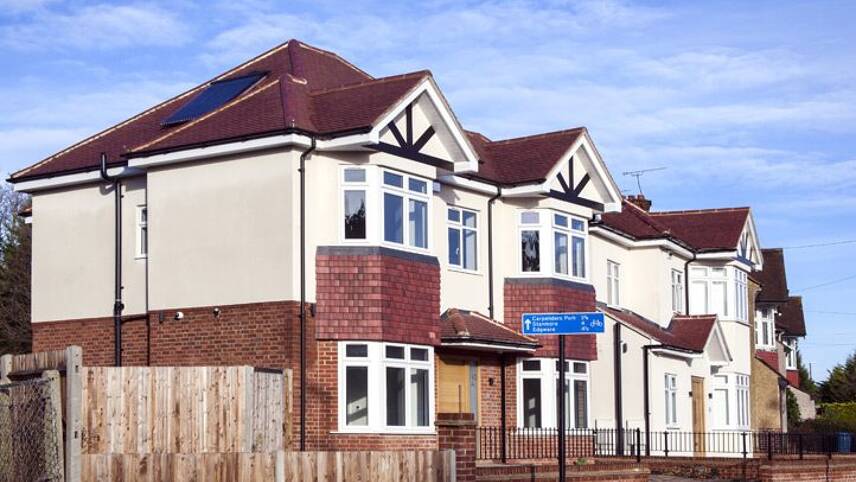Register for free and continue reading
Join our growing army of changemakers and get unlimited access to our premium content

New homes will be required to have a reduced carbon footprint of 31% by 2021 compared to current levels
The Government responded to the ongoing consultation on the Future Homes Standard last night (19 January), outlining new time-bound targets to lower carbon emissions from the built environment.
Housing Minister Chris Pincher announced that all new homes must be more energy efficiency and “zero-carbon ready” by 2025, despite previous hints from the Government that the deadline could be moved forwards.
Specifically, new homes are expected to produce 75-80% lower carbon emissions compared to current builds. An additional requirement is for new homes to have a reduced carbon footprint of 31% by 2021 compared to current levels.
Existing homes will also be subject to improvements. A new energy efficiency standard for extensions will be issued and the requirements for any repairs will also focus on energy consumption, such as windows, heat pumps, lightings and cooling systems.
The Government has also announced a consultation on higher performance targets for non-domestic buildings, aiming for them to be zero-carbon ready by 2025 also. Subject to consultation, it is believed that additional ventilation and indoor air quality monitoring will be key requirements for businesses moving forwards. A Future Buildings Standard consultation runs until 13 April 2021.
“Improving the energy performance of buildings is vital to achieving net-zero emissions by 2050 and protecting the environment for future generations to come,” Pincher said. “The radical new standards announced today will not only improve energy efficiency of existing homes and other buildings but will also ensure our new homes are fit for the future, by reducing emissions from new homes by at least 75%.
“This will help deliver greener homes and buildings, as well as reducing energy bills for hard-working families and businesses.”
Above and beyond
With the built environment accounting for around 40% of emissions, green groups have continuously expressed frustration at the lack of time-bound measurements outlined in the proposed Future Homes Standard.
Originally, the Future Homes Standard was set to come into effect in the latter half of 2020, covering England only, and the Government also hinted that the 2025 deadline could be moved forward to “ensure that implementation takes place to the shortest possible timeline“.
In fact, some green groups are calling for higher ambitions to address the UK’s housing stock. In an open letter coordinated by the UK Green Building Council (UKGBC) and sent to the Secretary of State at the Ministry of Housing, Communities and Local Government (MHCLG), local authority leaders called for the freedom to set energy efficiency standards that are above national proposals.
A group of leading architects and engineers said proposed policy changes would collectively result in a “step backwards, in a climate where we need a huge leap forward”. Environmental campaigners including Greenpeace and Friends of the Earth have also urged for broader and more rapid policy action that gives local authorities greater power.
The UK Government’s Green Finance Institute (GFI) has found that scaling up green retrofitting of the UK’s existing housing stock would require investments of up to £65bn while supporting the economic recovery.
Matt Mace


While this is great news it doesn’t go far enough. Why didn’t the Government insist on all new build homes to be PassivHaus standard? Unless the bar is set high builders will only go as far as the regulations state, they will never exceed them voluntarily.
And who is going to ensure new builds are actually built to these new standards? We all know the "Friday 4pm" situation where something is just covered up with a "sod it no one will ever know" attitude. I myself have a large "hole" in the roof insulation in my home that I can not do anything to rectify without taking the entire roof off.
It also worries me that Heat Pumps are being pushed as the only option for home/office heating. While they do work when installed in a properly designed building (the Finns use them a lot but they have super insulated homes) they simply do not work effectively in older housing stock and can end up costing the owner 4 or more times more to heat their homes. Or in one case I know unable to actually heat their home after they were swapped from oil boiler to ASHP.